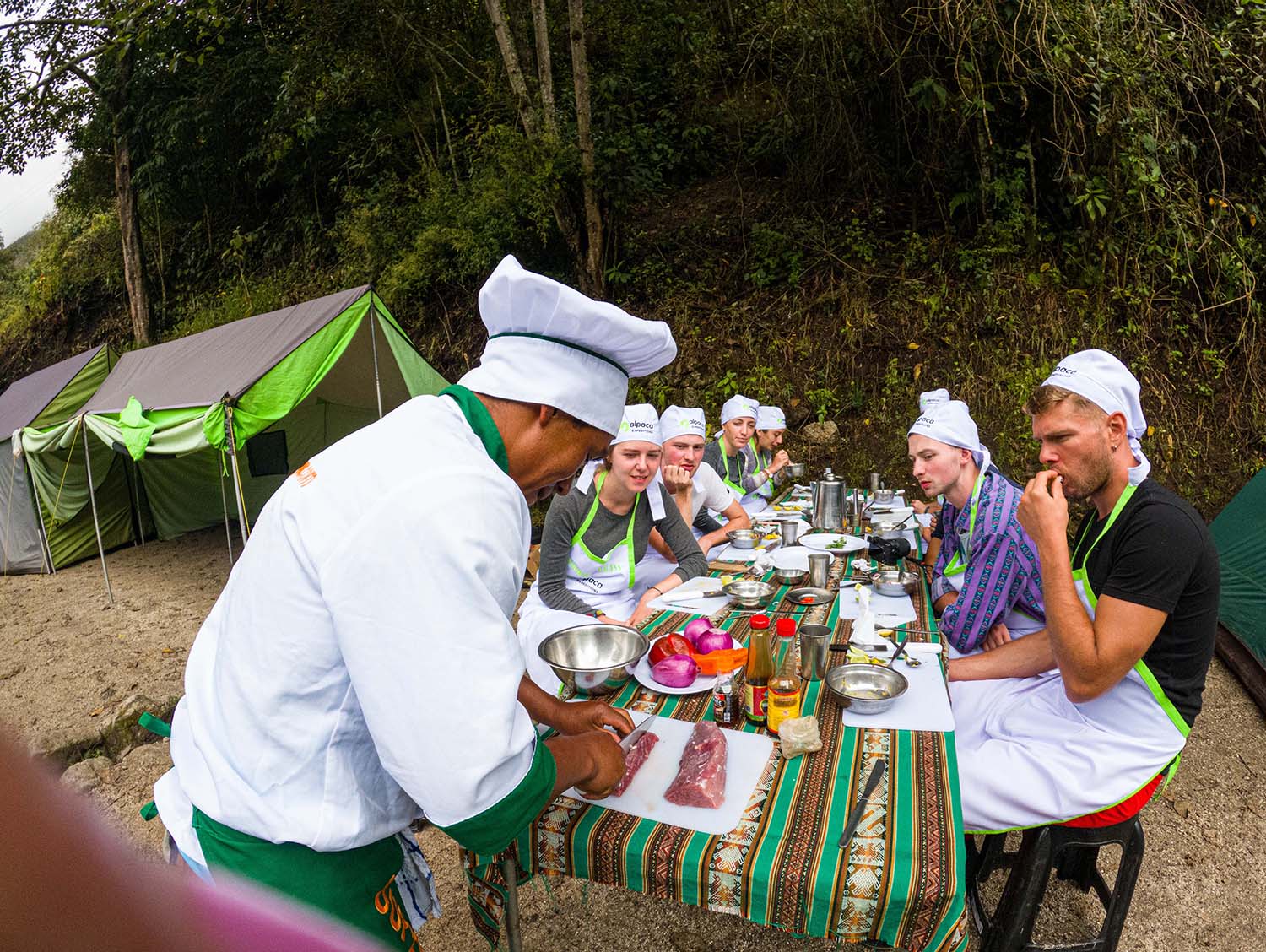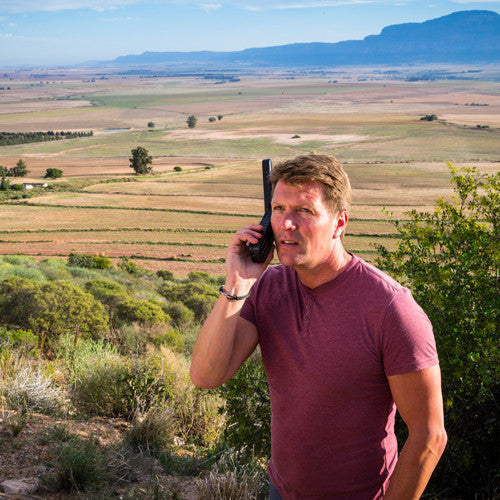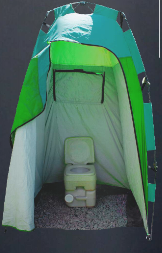Your Machu Picchu Journey: Insider Insights, History and Heartfelt Advice from a Friend
Machu Picchu Journey:
If you’ve ever typed “Machu Picchu” into your search bar, you know the internet is full of glossy photos, succinct itineraries, and generic top‑ten lists. Those pieces are great if you only want a quick snapshot. But Machu Picchu Journey is much more than that.
But for travelers who crave more who want stories, context, historical footnotes, and the type of insider advice you normally get over coffee with a well‑travelled friend, articles can feel a bit thin. Alpaca Expeditions asked us to change that.
As a 100 % locally owned company run by Quechua‑speaking Peruvians, they believe every visitor should experience the Sacred Valley not as a box‑tick, but as a journey. What follows is their ultimate, long‑form companion to Machu Picchu: an article deep dive designed to answer your questions, ignite your curiosity, and help you prepare for an adventure you will remember forever.
Lost City of the Incas:
Machu Picchu has been called the “Lost City of the Incas,” a label that hints at mystery and discovery. Built on a high mountain ridge in the mid‑1400s, it towers 2,430 metres (7,970 ft) above sea level. The citadel itself covers about 80,000 acres and is surrounded by steep forested slopes and the tumultuous Urubamba River.
At any given time during the Inca period, there were probably no more than 750 people living here. Its longevity lies in the combination of cunning Inca engineering, clever hiding, and sheer luck: the Spanish conquistadors never found Machu Picchu, so the complex escaped the destruction that befell many other Andean sites.
Instead, the world rediscovered it in 1911 when explorer Hiram Bingham, guided by local farmers, reached its terraces and let the rest of humanity in on the secret. Today, the site is a UNESCO World Heritage property and one of the New Seven Wonders of the World.
Throughout this guide, we will refer to facts and figures drawn from reliable sources such as the Two Wandering Soles Inca Trail guide, Worldly Adventurer’s trekking articles, and the detailed travel guides on Wikivoyage and Kiddle.
Citations accompany statements to show exactly where information comes from, so you can verify details if you wish. In places where the literature is unclear or contested, we flag differing opinions and explain why certain interpretations are popular. Most importantly, we approach the subject as friends: we don’t just tell you what to do, we tell you why it matters. Let’s begin.
The Land Where History Touches the Sky
Location and Setting
Machu Picchu is perched dramatically on a saddle between two peaks- the eponymous Machu Picchu Mountain and its steeper companion, Huayna Picchu. From its terraces, you look down about 300 metres to the winding Urubamba River while cloud forest clings to the surrounding ridges. According to the Wikivoyage travel guide, the site sits roughly 1,000 ft (about 300 m) above the river.
The elevation of the citadel itself is 2,430 m (7,970 ft), high enough to feel the thin mountain air, but significantly lower than Cusco’s 3,400 m. This altitude means visitors can explore without the extreme cold often associated with the Andes: daytime highs hover around 25 °C and nighttime lows rarely drop below 10 °C, but the high UV index and the wet season (October-April) require precautions.
A common first impression is that Machu Picchu feels both tropical and alpine; bromeliads and orchids cling to rock faces while llamas graze beneath snow‑capped peaks.
The site’s location was not accidental. When the Inca empire was at its height, this ridge sat near the centre of a network of sacred mountains (apus) and astral alignments. From here, the sun rises between distant peaks at the winter solstice, and the southern cross can be seen overhead.
The Urubamba Riverknown to the Incas as the Willkamayu, or “sacred river,” curves around the citadel like a protective moat. Modern visitors approaching by train or hiking along the Inca Trail often comment on how sudden the ruins appear: one minute you are in dense forest, the next you are standing before terraces and temples.
It’s not an illusion ancients deliberately used topography to hide the site from outsiders. The few entrances were guarded by checkpoints and watchtowers, ensuring that only those with permission could enter.
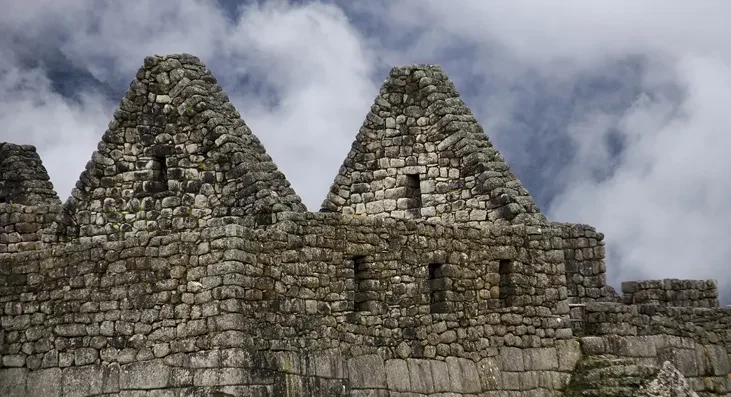
Machu Picchu Journey
A Brief History
Researchers believe Machu Picchu was built under the reign of Pachacuti Inca Yupanqui around the mid‑15th century. Pachacuti expanded the Inca realm from a regional kingdom into an empire stretching from what is now Ecuador to Chile, and he built royal estates across the Sacred Valley.
Machu Picchu may have been one such estate country retreat for the imperial elite. Archaeologists estimate that no more than 750 people lived here at any one time, and that the population dropped dramatically in the rainy season when roads became impassable. In 1572, as Spanish forces overthrew the remaining Inca strongholds, residents abandoned the site. Because the invaders never found it, Machu Picchu remained largely intact.
For centuries, farmers in the region knew of the ruins, but it wasn’t until Hiram Bingham visited in 1911 that the world took notice. Locals led him to the terraces, and he began clearing vegetation with funding from Yale University and the National Geographic Society. Bingham took artefacts back to Yale for study and displayed the site in an issue of National Geographic, sparking global interest.
In 1981, Peru declared Machu Picchu a Historical Sanctuary, and in 1983, UNESCO inscribed it as a mixed cultural and natural World Heritage Site. The designation acknowledges both its archaeological significance and the biodiverse cloud forest around it. In 2007, an international poll voted Machu Picchu one of the New Seven Wonders of the World. More recently, Peru and Yale reached an agreement for the return of artefacts removed by Bingham, a move celebrated by scholars and descendants of the Incas.
Architecture, Engineering, and Sacred Geometry
Dry‑Stone Masonry and Terracing
One of the most astonishing features of Machu Picchu is its construction. The Incas used polished dry‑stone blocks precisely cut to interlock without mortar in the major temples. This technique allowed walls to flex during earthquakes without collapsing, a key advantage in seismic Peru.
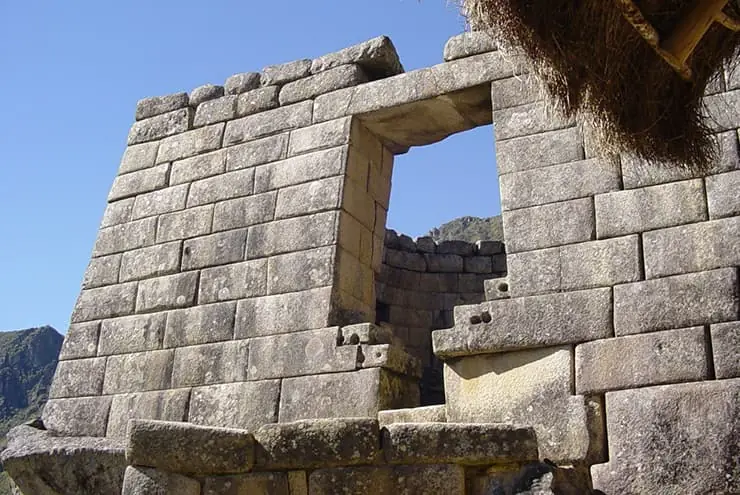
Architecture, Engineering, and Sacred Geometry
Smaller buildings and terraces were assembled with shaped stones and clay mortar; their purpose was mainly agricultural or residential. Nearly every flat surface at the site is man‑made; terraces extend down the slopes to prevent erosion and create arable land.
The terraces also act as retaining walls, stabilising the mountain. When you walk along them, you can see layers of stone, gravel, sand, and topsoil Inca form of geotechnical engineering.
The site is divided into an agricultural sector and an urban sector. The agricultural sector contains the broad terraces where farmers grew maize, potatoes, and quinoa, likely for the consumption of the royal court.
Archaeologists have identified sophisticated irrigation channels that diverted spring water through fountains and baths before spilling into farmland. The urban sector is where the most remarkable structures stand. These include the Intihuatana stone, Temple of the Sun, and Room of the Three Windows. Each of these has unique features that reflect Inca cosmology.
Intihuatana Hitching Post of the Sun
Intihuatanaliterally “hitching post of the sun” is a carved rock pillar standing atop a stepped pyramid. The Incas used it as an astronomical clock. On the equinoxes, the midday sun casts no shadow on the stone; on the solstices, the shadow falls at precise angles, marking seasonal change.
Guides often caution travellers not to touch the stone; a rule enforced after a careless TV crew chipped it during filming. While the site receives thousands of visitors daily, you may still feel a palpable sense of alignment with the cosmos when standing here, particularly at sunrise.
Temple of the Sun and Room of the Three Windows
The Temple of the Sun is a curved tower built atop a huge boulder. During the June solstice, sunlight enters a trapezoidal window and illuminates a ceremonial niche. Beneath the temple is a cave known as the Royal Tomb; mummies may have been placed here in the Inca period.
The Room of the Three Windows sits across the main plaza. Each window frames a different vista of the surrounding mountains and may symbolize the three realms of the Inca cosmology: Hanan Pacha (the heavens), Kay Pacha (the earthly realm) and Ukhu Pacha (the underworld). The precision with which these windows were cut is particularly striking; visiting stonemasons often shake their heads in admiration.
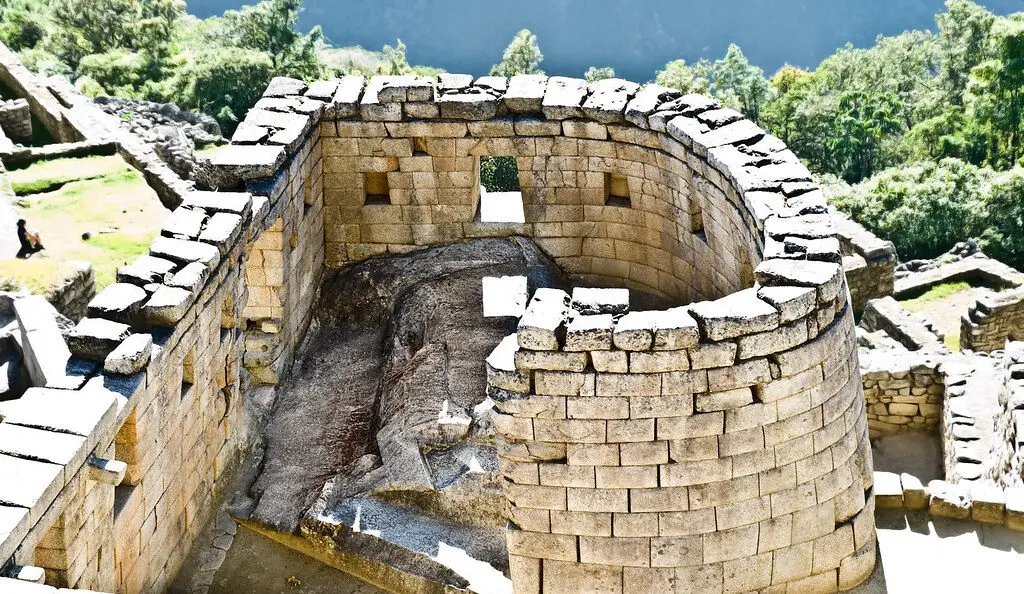
Temple of the Sun
Other Structures and the Sacred Plaza
Across the site, you’ll also find several lesser‑known yet fascinating buildings. The Sacred Plaza contains the Main Temple, a hall with massive stones, and the Temple of the Three Windows. Nearby sits the House of the Priest and various storage rooms.
On the opposite side of the site, the Industrial Sector houses workshops where ceramics and textiles are produced. The Guardhouse first building you see when entering from the Sun Gateoffers one of the best panoramic views of the citadel. Behind it a small path leads to an Inca Bridge carved into a sheer cliff; in the Inca era, this served as a hidden entrance.
Flora, Fauna, and Environmental Significance
Machu Picchu lies within a cloud forest high‑altitude tropical ecosystem characterised by constant mist and lush vegetation. According to Wikivoyage, typical plant life includes pisonayes, q’eofias, alisos, and puya palm trees, along with ferns and more than 90 species of orchids. Spring brings bursts of colour as orchids bloom along the trail. The diversity of flora provides habitats for a range of animals.
The same source lists spectacled bears, cock‑of‑the‑rock birds (Peru’s national bird), tankas, wildcats, and an impressive variety of butterflies and insects. The cloud forest’s fertility is due to the combination of warm air from the Amazon basin and cooler Andean winds; these create frequent showers and high humidity. Travellers are often surprised to find bamboo and moss draped over trees only a few degrees from the equator.
Because Machu Picchu straddles the boundary between the high Andes and the Amazon, it forms part of a biological corridor. Conservation is thus a major theme. UNESCO’s “mixed site” designation emphasises protecting both cultural heritage and biodiversity.
We support conservation by training guides in Leave‑No‑Trace principles and encouraging travellers to bring reusable water bottles and avoid single‑use plastics. They also run tree‑planting projects in nearby villages. When trekking, you may spot evidence of conservation: wooden walkways over sensitive areas, signage asking visitors not to stray off paths, and rangers enforcing limits on group sizes.
Climate and the Best Time to Visit
Peru lies south of the equator, so the seasons are opposite to those in North America and Europe. Machu Picchu has two distinct seasons: dry (April-October) and wet (November-March). The Two Wandering Soles guide warns that winter (November-March) in Cusco is rainy, with the Inca Trail subject to mudslides.
February is closed for maintenance on the trail. Summer (June-August) is the peak tourism season when visitors from around the world pack the site; however, it offers the driest weather.
Shoulder seasons, April-May and September-Octobercombine moderate crowds with relatively stable weather. Many locals recommend these months, particularly May and September, when the hills are green and wildflowers bloom.
At Machu Picchu itself, daytime temperatures remain fairly constant around 25 °C, while nights drop to around 10 °C. UV radiation is intense at altitude, so sunscreen and a wide‑brimmed hat are essential.
Even during the dry season, afternoon clouds can bring sudden showers, so pack a rain jacket. When you plan your visit, consider aligning with local festivities: Inti Raymi (Festival of the Sun) in June draws large crowds to Cusco, while All Saints’ Day at the beginning of November offers a quieter but culturally rich experience.
Getting The Modern Pilgrimage
By Train and Bus
The majority of visitors today reach Machu Picchu via a combination of train and bus. Trains depart from either Cusco’s San Pedro station or the Sacred Valley towns of Ollantaytambo and Urubamba.
They wind along the Urubamba River to Aguas Calientes (also known as Machu Picchu Pueblo), the small town at the base of the ruins. From there, frequent shuttle buses make the 20‑minute climb up a series of switchbacks to the site entrance.
Buses start as early as 5 a.m. and operate on a first‑come‑first‑served basis. You can also walk from Aguas Calientes along a steep trail that takes about 90 minutes.
By Foot Inca Trail
For many travellers, the most rewarding way to reach Machu Picchu is by hiking the Inca Trail, a 43‑kilometre (26‑mile) stone path built by the Incas known as the Qhapaq Ñan. As Two Wandering Soles notes, this route was the ceremonial Royal Road used by Inca nobility. Modern concern about overuse has prompted the Peruvian government to restrict the trail to 500 permits per day, including guides and porters.
Permits for high season often sell out six months in advance. Because of these restrictions, and to ensure environmental protection, hikers must go with a licensed tour operator. Alpaca Expeditions is one such company, and they handle permits, equipment, and logistics.
Alternative Routes
If permits are sold out or you prefer a less crowded path, several alternative treks lead to Machu Picchu:
- Salkantay Trek– A 66‑kilometre (41‑mile) trail through high mountains and cloud forest. Starting at Soraypampa (3,900 m), it crosses the Salkantay Pass at 4,620 m and descends into lush valleys. Hikers experience glacial lakes like Humantay, glamping domes at Sky Camp, and starry skies away from crowds. Unlike the Inca Trail, there is no permit limit.
- Lares Trek- A cultural trek through Andean villages, weaving communities, and hot springs. Passes rarely exceed 4,500 m, and groups often stay in homestays or community lodges. This trek emphasizes interaction with Quechua‑speaking families; Alpaca Expeditions partners with villages to provide fair income.
- Choquequirao Trek- A rugged route to the ruins of Choquequirao, often called Machu Picchu’s sister city. It involves steep descents and ascents into the Apurímac Canyon. The trek can be extended to finish at Machu Picchu via a combination of trails.
- Inca Jungle Trek- A multi‑sport route combining biking, rafting and hiking. Lower altitudes and adrenaline activities make this a favourite among young travellers.
Each alternative offers distinct landscapes and challenges. We discuss them in more detail later in this guide.
Responsible Travel & Why Choose Alpaca Expeditions
With nearly a million tourists visiting the ruins each year, choosing an operator that practices responsible tourism is essential. Two Wandering Soles recommends seeking locally owned companies, fair wages for porters, and a commitment to sustainability.
When the authors researched Alpaca Expeditions, they were impressed by owner Raúl Ccolque Ccolque, a Quechua‑speaking guide who started as a porter. Alpaca treats porters well, pays fairly, and provides quality equipment and food.
Travellers described being served delicious meals and waking to cocoa tea delivered to their tents. For us, working with a company grounded in local community values is non‑negotiable; it ensures your tourist dollars support the people who protect and share this heritage.
The Classic Inca Trail- A Day‑by‑Day Machu Picchu Journey
The four‑day Inca Trail is the stuff of legend. It’s not just a hike; it’s a pilgrimage along a stone road laid down half a millennium ago. Below is a detailed breakdown of the experience, seasoned with first‑hand tips, anecdotes, and a healthy dash of encouragement.
Preparation and Acclimatisation
Before hitting the trail, you’ll attend a pre‑hike briefing in Cusco. Guides review the itinerary, check your documents, and answer last‑minute questions. Worldly Adventurer emphasises arriving in Cusco at least two days before the trek to acclimatise. Some travellers choose to spend a week exploring Cusco and the Sacred Valley; besides giving your body time to adjust, it allows you to visit sites like Sacsayhuamán, the Pisac ruins, and Maras salt pans.
If you’re coming from sea level, the jump to 3,400 m can produce headaches and fatigue. Drink coca tea (a local remedy), stay hydrated, eat light meals, and rest. Many hikers obtain prescriptions for Diamox (acetazolamide), a medicine that mitigates altitude sickness. Consult your doctor before travelling.
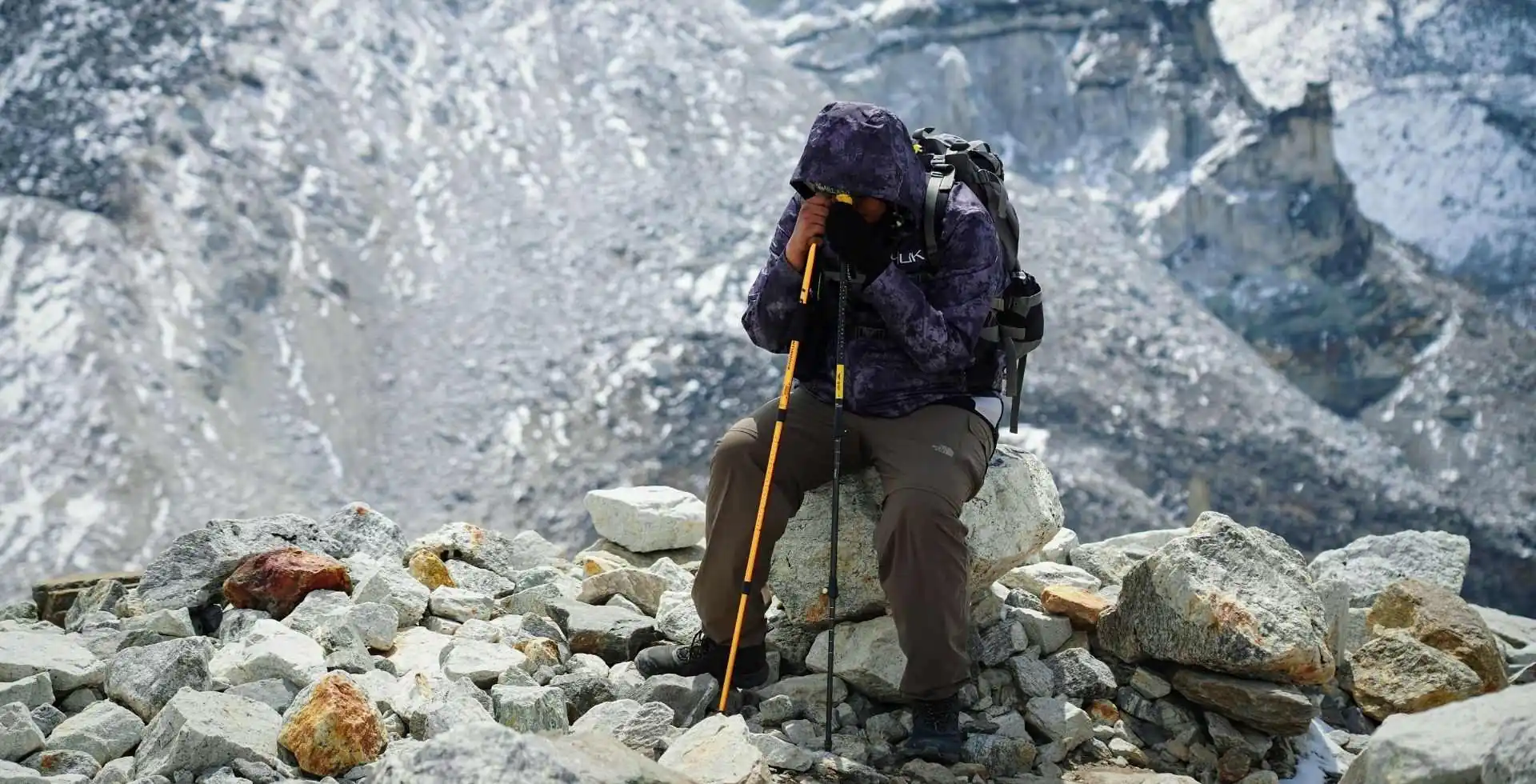
Preparation and Acclimatisation
Pack smart: bring comfortable hiking boots you’ve already broken in, warm layers (temperatures vary widely), a rain jacket, headlamp, sun hat, trekking poles, reusable water bottle, and a small daypack.
Tour companies provide tents, sleeping pads, and food, but you may want your own sleeping bag. Porters carry up to 7 kg of your gear (subject to regulations), so pack light and respect weight limits.
Day Zero: Meeting the Team
On the evening before the trek, you’ll meet your guide and fellow hikers. There’s a palpable buzz in the airpart excitement, part nerves. The guide will check passports (government officials verify every trekker’s identity at the trailhead) and distribute duffel bags for porters. This is also when you can ask burning questions like “How bad is the second day really?” or “Will there be toilets?” (Spoiler: yes, but they’re basic). Seasoned hikers recommend going to bed early; tomorrow’s start is pre‑dawn.
Day One- KM 82 to Wayllabamba
The bus picks you up around 5 a.m. The drive to KM 82 (also called Piscacucho) takes about three hours. After a hearty breakfast and a group photo by the trail sign, you cross the Urubamba River via a suspension bridge.
The first few hours are gentle: a broad path rises gradually through farmland and eucalyptus groves. Along the way, you’ll see the snow‑capped Mount Veronica and pass the Inca terraces of Llactapata. According to Worldly Adventurer, the starting elevation is around 2,600 m (8,530 ft).
Day one covers about 12 kilometres (7.5 miles) with an elevation gain of 400 m (1,300 ft) and usually takes six to seven hours. It’s considered the easiest day, giving your body a chance to warm up for what’s ahead.
Lunch on day one is your first taste of how well trek operators feed their guests. At a canopy of tents, porters transform into chefs, whipping up multi‑course meals complete with fresh vegetables, quinoa soup, and even ceviche. After another few hours of walking, you’ll reach the village of Wayllabamba, set at about 3,000 m (9,842 ft).
Here camp is set up on terraces, and the view of distant peaks bathed in sunset light is unforgettable. Some tours offer hot showers for a small fee; others provide wash basins. Remember to stretch before bed and admire the Milky Waythe Andean sky is a wonder in itself.
Day Two- The Climb to Dead Woman’s Pass
Make no mistake: day two is a beast. After an early wake‑up call (your porter knocks on the tent with a cup of coca tea), you begin a steady climb through cloud forest. The trail soon turns into stone steps laid by Inca builders. Take your time, drink water, and chew coca leaves or sweets to help with the altitude.
When you emerge above the treeline, the landscape opens to sweeping views of neighbouring mountains and valley floors. Finally, you reach Warmiwañusca, better known as Dead Woman’s Pass, at around 4,200 m (13,780 ft).
Standing at the saddle, you’re rewarded with a panorama that makes every laboured breath worth it. Many hikers experience an emotional high heretears, laughter, group hugs. Savour it.
After celebrating, you begin the descent to Paqaymayu camp. Contrary to what you might think, going down is often harder than going up; the stone steps can be rough on knees. Hiking poles become essential. The campsite sits at around 3,600 m and is usually cold and damp. But by now you know the routine: stretch, tea, dinner, sleep. Your body will thank you tomorrow.
Day Three- Runkurakay, Sayacmarca, and Phuyupatamarca
Day three is long but magical. You climb to the Runkurakay Pass (about 3,900 m), where a small circular ruin served as a rest stop for Inca messengers. The trail then descends to Sayacmarca, an extensive archaeological site perched on a spur. Unlike Machu Picchu, Sayacmarca receives few visitors, so you can explore its maze‑like alleys and look over a sea of green peaks.
A second climb leads to the Phuyupatamarca pass (“City Above the Clouds”), where, on a clear day, you may glimpse the snowy summit of Salkantay far to the west. The descent to Wiñay Wayna passes through thick subtropical forest draped in moss and orchids; keep an eye out for hummingbirds and colourful butterflies.
At Wiñay Wayna, you can visit terraces and a small temple that some call the “Mini Machu Picchu.” Tonight is your last camp. The excitement is palpable: tomorrow you reach the Sun Gate.
Day Four- Sun Gate to Machu Picchu
On the final morning, you awaken before dawn and hike under starlight toward Inti Punku, the Sun Gate. As the eastern sky brightens, you make the final ascent to the doorway through which Inca royalty once entered.
Then suddenly, through the stone arch, you see Machu Picchu spread below terraces, temples and the iconic Huayna Picchu rising behind. The early light turns the stonework golden, and low clouds drift through, lending an ethereal feel. Many hikers describe this moment as one of the most moving of their lives.
After soaking it in, you descend to the main entrance to check in, use the restroom and leave your trekking poles (they aren’t allowed inside). Your guide then leads you through the ruins, explaining history, architecture, and astronomy.
Even though you may have read about Machu Picchu for years, walking its paths is an entirely different experience. The sense of continuity that your footsteps fall where Inca nobles, Hiram Bingham, and thousands of travellers have walked is humbling.
After your guided tour, you have free time. Many choose to climb Huayna Picchu or Machu Picchu Mountain for additional viewpoints. Both require separate tickets purchased in advance and have steep, exposed sections.
Huayna Picchu is shorter (two hours round trip) but very steep; Machu Picchu Mountain is longer (three hours) and less vertigo‑inducing. If you have energy, these hikes offer spectacular perspectives.
Otherwise, find a quiet terrace, sit with a snack, and reflect on your Machu Picchu journey. In the afternoon, you take the bus down to Aguas Calientes, board your train, and return to Cusco by evening. Exhausted but exhilarated, you’ll probably sleep like a stone.
The Salkantay Trek- High-Altitude Wilderness
If the Inca Trail is the royal road, the Salkantay Trek is its wild sibling. Named after Nevado Salkantay, a 6,271-m snow‑capped peak, this trek offers glacial scenery, turquoise lakes, and cloud forest, all with far fewer hikers. Worldly Adventurer lists the Salkantay as roughly 66 km (41 mi) long and notes that the most common itinerary is five days.
Unlike the Inca Trail, the Salkantay requires no permit and can be booked even days before departure. However, the trek starts high and demands good fitness and acclimatisation.
Key Facts and Elevation Profile
The trek begins at Soraypampa (3,900 m) and climbs past the stunning Humantay Lake (4,200 m) to the Salkantay Pass (4,620 m) on day one. Hikers cover about 20 km (12.5 mi) that day, with a cumulative ascent of 1,020 m and descent of 1,120 m.
Second Day descends steeply to Loreta (2,200 m) via cloud forest.
Third Day climbs again to Llactapata (2,700 m), a lesser‑known Inca site that offers a distant view of Machu Picchu.
Fourth Day drops to Hidroeléctrica (1,820 m) and continues along railway tracks to Aguas Calientes.
On day five, you visit Machu Picchu. Because of the high starting point and large elevation gains, many hikers find day one the toughest. Arriving in Cusco early to acclimatise is again essential.
What Makes Salkantay Special?
Varied Landscapes: The trail takes you from alpine tundra to humid jungle in a matter of days. Along the way, you might spot spectacled bears, condors, alpacas, and even vizcachas (Andean chinchilla‑like rodents). The transition from snow‑covered passes to coffee plantations feels like travelling across continents.
Less Crowded: Unlike the Inca Trail, you’re unlikely to see more than a handful of hikers until you reach Hidroeléctrica. Campsites are quiet, and stargazing is unspoiled by light pollution.
Cultural Touches: Many itineraries include a visit to local farms where you can taste fresh passion fruit, coffee, and avocados. On day three, at Llactapata, you can glimpse Machu Picchu from afar tantalising preview.
Flexibility: Since there’s no permit quota, you can often decide last‑minute to trek the Salkantay. You can also combine it with the Short Inca Trail or finish at Hidroeléctrica and take the train. Some companies offer comfortable domes with glass ceilings, while others provide more basic tents.
Challenges and Tips
Be prepared for the high altitude. The first night is at 3,900 m, and you’ll quickly climb to 4,620 m. If you haven’t acclimatised, altitude sickness could ruin your trek. Spend at least two days in Cusco beforehand and consider Diamox. Pack warm clothing; nights above 3,500 m are cold. Bring a good rain jacket.
The weather in the mountains is unpredictable, and even in the dry season, you may encounter sleet or hail. Finally, train for long days: day one covers 20 km with steep ascents and descents. Hiking poles and sturdy boots are invaluable.
Alternative Treks at a Glance
The Lares Trek
The Lares Valley lies northeast of Cusco and offers a gentler alternative to the Inca Trail. Treks range from three to five days and pass through Quechua villages where weavers still use backstrap looms to create intricate textiles. The highest pass, Ipsaycocha, reaches about 4,450 m.
After descending into the Patacancha Valley, trekkers sometimes join the Short Inca Trail for the final approach to Machu Picchu. What distinguishes Lares is the cultural immersion: you might sleep in community‑run lodges, visit a school, and soak in natural hot springs near the town of Lares. Because there are multiple routes and no permit system, Lares treks can be tailored to different fitness levels and timelines.
The Choquequirao Trek
Choquequirao, meaning “Cradle of Gold,” is an Inca city perched above the Apurímac River canyon. Reaching it involves a grueling 1,500 m descent followed by a matching ascentand that’s just to get there. Most itineraries take four to five days to visit Choquequirao alone, or seven to nine days to continue toward Machu Picchu.
The upside? You’ll share the trail with far fewer trekkers and see a site many call “Machu Picchu without the crowds.” Terraces with llamas carved into their stonework and sweeping canyon views are highlights. Logistics are more complex, and some operators require a minimum number of participants to run the trip.
The Inca Jungle Trek
For thrill‑seekers, the Inca Jungle trek mixes mountain biking, zip lining, rafting, and trekking over three or four days. Starting from the highlands, you descend by bike to the cloud forest, raft down the Urubamba River, hike through coffee plantations, and finally reach Aguas Calientes.
Because it remains at lower elevations, acclimatisation is less of an issue. However, it doesn’t follow original Inca roads and is more about adventure sports than cultural immersion. If you love adrenaline and want a non‑traditional route, this could be for you.
Inside Machu Picchu- Navigating the Sanctuary
Ticketing, Circuits, and Regulations
Since 2021, Machu Picchu’s management has implemented timed entry slots and defined circuits to manage crowds. When purchasing a ticket, you choose a time (hourly slots from 6 a.m. to 3 p.m.) and one of several circuits that determine which parts of the site you can visit.
Circuit 1 includes the upper terraces and the classic postcard viewpoint; Circuit 2 covers the main ruins and Sacred Plaza; Circuit 3 focuses on the lower agricultural area; Circuit 4 is similar but directs traffic differently.
Additional tickets are required for Huayna Picchu, Machu Picchu Mountain, or Huchuy Picchu (a small hill at the edge of the site). You can check that in internet for the daily tickets availability. Daily quotas for these hikes are low (usually 200-400 people), so book early.
Upon entry, you must present your passport and ticket. Large backpacks, trekking poles, and single‑use plastics are prohibited. Guides are mandatory for first‑time visitors; after July 2024, this requirement may be strictly enforced.
Stick to marked pathsstraying off could damage fragile terraces or sacred stones. Respectfully observe signage; for example, climbing on walls is not allowed. Drones are banned to protect wildlife and other visitors’ experience.
Key Sights to Explore
Although we’ve already discussed the Intihuatana and major temples, the citadel has many corners worth exploring:
- The Sacred Rock: A carved granite boulder shaped like the profile of a mountain behind it. Locals consider it a huaca (sacred object).
- The Temple of the Condor: Formed by natural rocks, this temple resembles a condor’s head and wings. A stone carved on the floor is thought to represent the bird’s body; condors were sacred messengers between worlds.
- The Inca Bridge: A 20‑minute walk from the Guardhouse, this narrow path carved into a cliff demonstrates how the Incas created hidden entrances. There is a gap in the trail originally covered by logs that could be removed to prevent enemy access. Only a railing separates you from a sheer drop; if you’re afraid of heights, think twice.
- The Industrial Sector: Here, you’ll find workshops with mortars carved into the stone floors, suggesting textile and ceramic production. Some of the storage buildings have trapezoidal doors and tall walls, typical of Inca warehouses.
- Huayna Picchu and Machu Picchu Mountain: These climbs offer views over the site. Huayna Picchu is steeper and more famous; Machu Picchu Mountain is higher (about 3,050 m) and provides a broader perspective.
Photography Tips and Quiet Moments
The classic postcard shot is taken from a terrace near the Guardhouse. Arrive early (around 6 a.m.) or late (after 3 p.m.) for softer light and fewer people. If visiting mid‑day, clouds can create dramatic effects; use them to your advantage.
A telephoto lens helps isolate details like the Temple of the Sun or a grazing llama. For sunrise photos, aim to be at the Sun Gate or Machu Picchu Mountain; note that Huayna Picchu’s summit is often cloud‑shrouded in the early morning.
While Machu Picchu is popular, moments of solitude are possible. Pause at the temple platforms, breathe deeply, and listen to the wind rustling through ichu grass. Llamas frequently wander among the ruins; yield to them and enjoy their photogenic poses.
Consider sitting quietly at the Sacred Plaza or on a lower terrace overlooking the river. The energy of the place is more palpable when you aren’t rushing for the next Instagram angle.
Practical Advice- Packing, Health, and Logistics
What to Pack for Trekking and Exploring
Even if you’re used to day hikes at sea level, trekking at altitude presents new challenges. Here’s a comprehensive packing list:
- Footwear: Broken‑in hiking boots with good ankle support. Trail runners are fine for strong ankles but may lack support on stone steps. Bring lightweight sandals or camp shoes to let your feet breathe.
- Clothing: Pack layers moisture‑wicking base layer, insulating mid‑layer (fleece or down jacket), and waterproof/windproof shell. Temperatures fluctuate dramatically between day and night. Don’t forget a hat, gloves, and warm socks. Quick‑drying shirts and pants are essential; cotton stays damp and chills your skin.
- Rain Gear: A breathable rain jacket and rain pants. Even in the dry season, mountain weather changes rapidly. Some operators supply ponchos, but they can be sweaty.
-
Accessories:
Sunglasses with UV protection, a wide‑brimmed hat or cap, high SPF sunscreen, lip balm, bandana or buff (doubles as sun protection and dust filter). Bring trekking poles (helps with descents), a headlamp with extra batteries, and a reusable water bottle or hydration bladder. A water filter or purification tablets allow you to refill from streams.
- Health & Hygiene: Personal medication, including altitude sickness prevention like Diamox, a small first‑aid kit (blister plasters, painkillers, diarrhoea treatment), insect repellent, hand sanitiser, and biodegradable wipes. Toilet paper and a small bag to pack out the used tissue. If you wear contact lenses, bring spares and solution, or consider glasses (dust can irritate eyes). Women may want to bring sanitary products and consider menstrual cups to reduce waste.
- Electronics: Camera with spare batteries and memory cards, portable charger, phone (with downloaded offline maps and translator), travel adapter (Peru uses 220 V). Note that there is little to no charging during treks unless your company provides battery packs.
- Documents & Money: Passport (required at trail checkpoints and Machu Picchu entrance), printed tickets and permits, cash in Peruvian soles for tips and small purchases, credit card for emergencies. Keep them dry in a waterproof pouch.
Staying Healthy at Altitude
Altitude sickness (acute mountain sickness or AMS) can affect anyone, regardless of fitness. Symptoms include headache, nausea, dizziness, fatigue, and shortness of breath. Worldly Adventurer notes that arriving from sea level and immediately trekking at over 4,215 m (13,828 ft) can be dangerous. Preventative steps include:
- Gradual Ascent: Spend two to three days at intermediate altitudes like Cusco or the Sacred Valley before trekking.
- Hydration: Drink plenty of water; dehydration exacerbates AMS. Avoid excessive alcohol and caffeine.
- Nutrition: Eat small, frequent meals high in carbohydrates. Locals swear by soups and coca leaves; coca tea is legal in Peru and can help relieve mild symptoms.
- Medication: Take Diamox or a similar medication after consulting a doctor.
- Listen to Your Body: If symptoms worsen (e.g., persistent vomiting, confusion), descend and seek medical help. Travel insurance that covers high‑altitude trekking is essential.
Safety and Regulations
The Peruvian government implements rules to preserve the Inca Trail and Machu Picchu:
- Permit Limits: Only 500 people (approximately 200 trekkers and 300 staff) may begin the Inca Trail each day. Book months in advance.
- Porter Welfare: Weight limits for porter loads and mandatory equipment (warm clothing, footwear) are enforced. Choose companies that respect these regulations and pay fair wages.
- Trail Closures: The Inca Trail closes each February for maintenance. Salkantay and other routes remain open.
- Guides: Licensed guides are required on the Inca Trail and for first‑time visitors to Machu Picchu. Support local guides by asking questions and tipping appropriately.
Culture, Community and Responsible Tourism
Quechua Heritage
The Quechua people are descendants of the Inca and continue to live throughout the Andes. Many still speak Quechua, an official language of Peru. When trekking, you may hear porters greeting each other with “Rimaykullayki” (hello) or “Solpayki” (thank you). Learning a few words shows respect.
At weaving villages on the Lares Trek, women demonstrate how they use natural dyes to turn alpaca wool into colourful textiles. Buying directly from artisans supports families and preserves traditional crafts. Avoid bargaining aggressively; paying a fair price sustains the community.
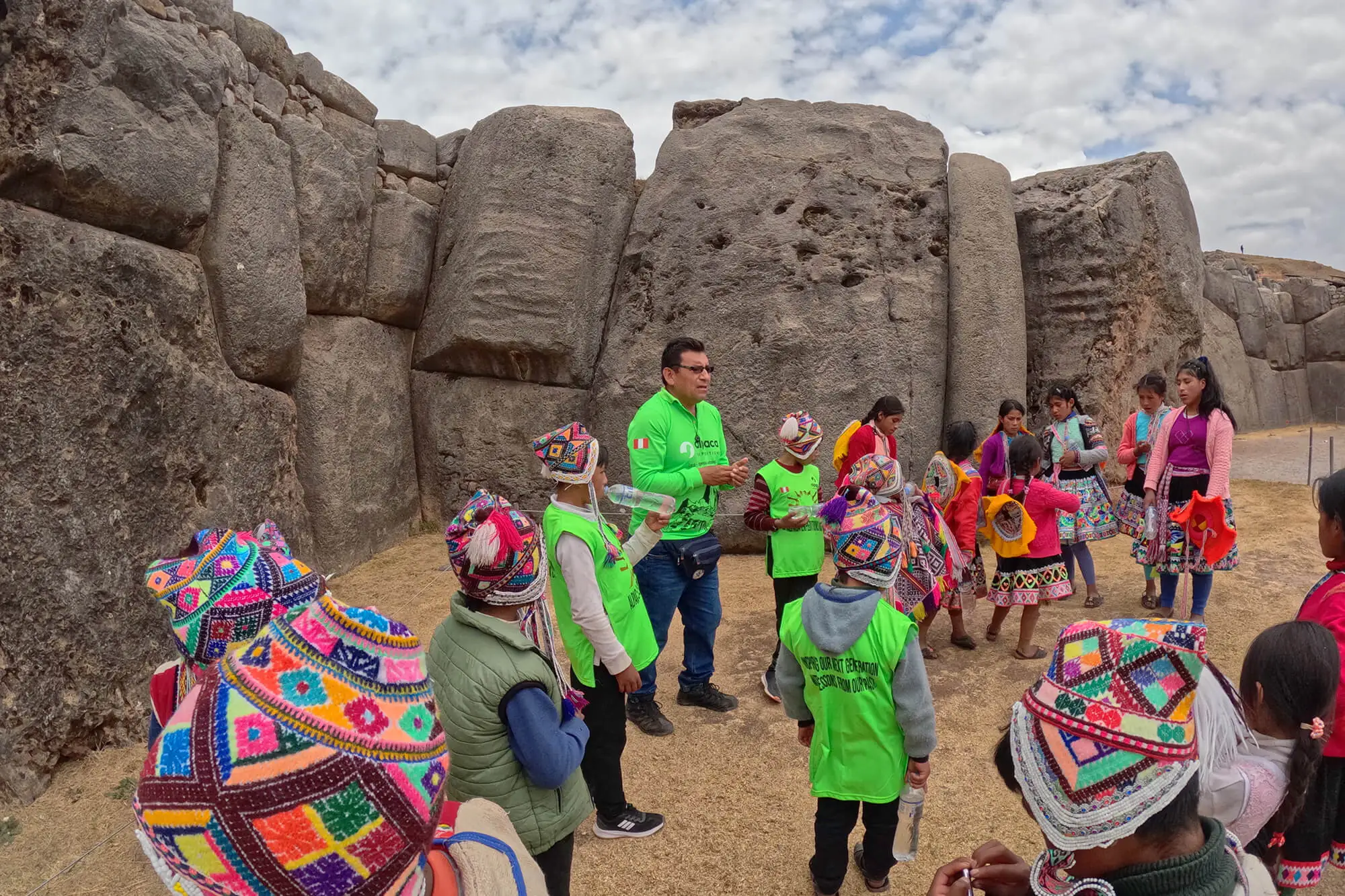
Culture, Community Machu Pichu
PortersThe Unsung Heroes
Inca Trail porters are the backbone of every trek. They carry tents, food, and your duffel bags, often while wearing sandals and smiling cheerfully. Alpaca Expeditions and other responsible companies limit loads to 20 kg per porter and provide uniforms, proper footwear, and good wages.
Trekkers typically tip porters collectively on the final night; your briefing will outline recommended amounts. Take time to learn porters’ names, share a few words in Spanish or Quechua, and let them know you appreciate their hard work. Some travellers bring small gifts like warm hats, gloves, or headlampsuseful items that lighten porters’ personal expenses.
Sustainable Practices
Mass tourism can degrade fragile ecosystems. Support conservation by:
- Packing Out Waste: Even fruit peels can harm local wildlife. Use reusable containers and bring a small bag for trash.
- Avoiding Single‑Use Plastics: Bring a water filter or purification tablets instead of buying plastic bottles. Alpaca Expeditions provides boiled water at meals.
- Sticking to Trails: Shortcuts cause erosion and damage plants. Stay on marked paths even if that means a longer walk.
- Respecting Wildlife: Don’t feed animals or get too close; human food can make them sick.
- Supporting Local Economies: Choose locally owned hotels, restaurants and shops. Hire local guides and purchase genuine crafts.
Eating and Drinking Fuel for the Machu Picchu Journey
Peruvian cuisine is diverse and delicious. On treks, professional cooks prepare hearty meals featuring soup, rice, vegetables, meats, and quinoa. Porters often carry kitchen tents, gas stoves, and fresh ingredients.
Trekkers rave about feasts with names like lomo saltado (stir‑fried beef), aji de gallina (chicken in spicy sauce), and papa a la huancaína (potatoes in cheese sauce). There’s also a surprising amount of baking: cakes and pancakes appear even at high altitude. Vegetarian and vegan options are available if you request them in advance.
In Cusco and the Sacred Valley, try cuy (roast guinea pig), chicha morada (purple corn drink), and pisco sour (the national cocktail). Street food like anticuchos (grilled skewers) and tamales make cheap and tasty snacks.
Aguas Calientes caters to tourists with pizzerias, bakeries, and cafes, but prices are higher than in Cusco. Always drink bottled or filtered water; tap water is unsafe. Avoid raw vegetables or unpeeled fruit in cheap eateries if your stomach is sensitive.
Accommodation- From Campsites to Luxury
In Cusco and the Sacred Valley
Cusco offers everything from backpacker hostels around Plaza de Armas to boutique hotels housed in colonial mansions. Travellers acclimatising for treks might stay in the San Blas neighbourhood, known for its bohemian vibe and craft shops.
The Sacred Valley towns of Ollantaytambo, Urubamba, and Pisac have quiet guesthouses, luxury lodges, and farm stays. Staying in the valley can ease acclimatisation since altitudes are lower than Cusco.
Along the Inca Trail
Camping is the norm on the Inca Trail. Porters arrive ahead of hikers to pitch tents and set up dining areas. Campsites have simple toilets; some offer cold showers. On the third night at Wiñay Wayna, there is a small lodge selling snacks and beer. Pack earplugs if you’re a light sleeper; the sounds of wind, water, and occasional snorers carry through thin tent walls.
Salkantay Trek Accommodation
Depending on your operator, you may sleep in tents, mountain lodges, or dome shelters. Some companies operate Sky Camp with glass igloo‑style domes offering views of the stars. At lower elevations, you may stay in jungle lodges with beds and hot showers. Because nights at altitude are cold, bring a warm sleeping bag even if lodging is provided.
Aguas Calientes
Aguas Calientes is the base town for Machu Picchu. Accommodation ranges from hostels to upscale hotels with hot springs access. Many travellers spend one night here before or after visiting the ruins. The town is small, so shops and restaurants are easily walkable. Catch the train back to Cusco from the station along the main road. Note that trains depart on schedule; allow time to collect your bags and queue.
Beyond Machu PicchuOther Sights in the Region
Machu Picchu is the jewel of the Sacred Valley, but the surrounding region boasts dozens of other remarkable sites. Consider extending your trip to explore:
- Cusco’s Historic Centre: See the Cathedral, Qorikancha (Temple of the Sun), San Pedro Market, and the twelve‑angled stone. The Inca foundations of many buildings reveal how Spanish colonists built their churches atop Inca temples.
- Sacsayhuamán: A fortress on a hill above Cusco with massive zigzagging walls. Some stones weigh over 100 tonnes. The site hosts the Inti Raymi festival each June.
- Moray and Maras: Terraced circular depressions used for agricultural experimentation and nearby salt pans have been harvested since pre‑Inca times.
- Pisac Ruins and Market: A hilltop citadel with temples, cemeteries and terraces, plus a bustling craft market below.
- Ollantaytambo: A living Inca town with fortress terraces and cobbled streets. Many Inca Trail and Salkantay departures begin here.
- Rainbow Mountain (Vinicunca): A day hike to colourful striped slopes at over 5 000 m. Goes best after acclimatisation.
- Humantay Lake: Often included in Salkantay treks, this turquoise glacial lake sits below towering peaks. Day trips from Cusco are possible.
Sample Itineraries
Classic Inca Trail Itinerary (7 Days)
1st Day: Arrive in Cusco; transfer to hotel; easy walking tour; acclimatise.
2nd Day: Sacred Valley tour visiting Pisac, Maras, Moray, and Ollantaytambo; overnight in Ollantaytambo (lower altitude) to aid acclimatisation.
3rd Day: Pre‑trek briefing; free morning; drive to KM 82; hike to Wayllabamba (12 km).
4th Day: Trek to Paqaymayu via Dead Woman’s Pass (11 km); camp.
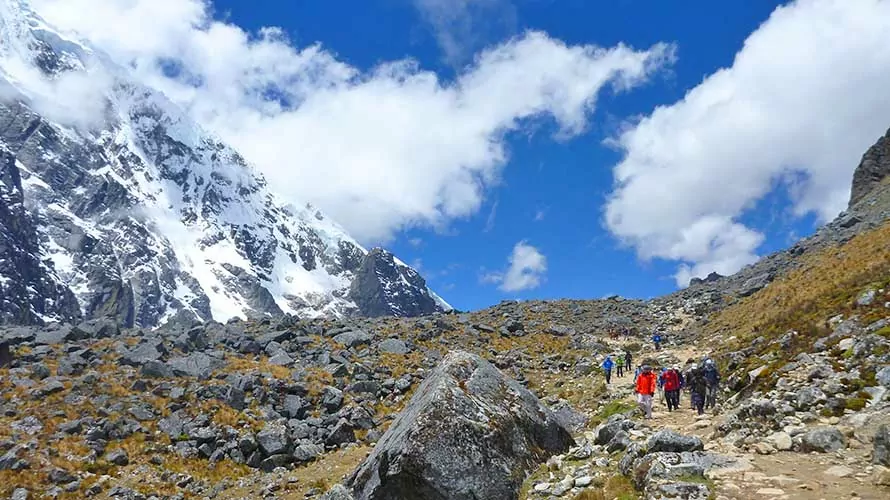
Classic Inca Trail Itinerary
5th Day: Trek to Wiñay Wayna via Runkurakay and Phuyupatamarca passes (16 km); camp.
6th Day: Hike to Sun Gate; tour Machu Picchu; descend to Aguas Calientes; train to Cusco.
7th Day: Fly home or continue exploring Cusco.
Salkantay Trek Itinerary (7 Days)
1st Day: Arrive in Cusco; acclimatise; optional city tour.
2nd Day: Drive to Soraypampa; hike to Humantay Lake; camp in Sky Camp.
3rd Day: Climb Salkantay Pass; descend to Wayramachay (20 km); camp.
4th Day: Descend to Loreta (coffee plantations); camp.
5th Day: Ascend to Llactapata; view Machu Picchu from afar; descend to Hidroeléctrica; take train or hike to Aguas Calientes.
6th Day: Visit Machu Picchu; return to Cusco.
7th Day: Fly home or explore the Sacred Valley.
Frequently Asked Questions
Q: When is the best time to hike the Inca Trail?
A: The dry season from May to September offers the best weather. May and September are shoulder months with fewer crowds. Avoid February when the trail is closed.
Q: Do I need a guide to visit Machu Picchu?
A: Guides are compulsory for first‑time visitors. The Inca Trail requires a licensed tour company. On alternative treks, you can hike independently, but local guides enhance safety and understanding.
Q: Can I hike the Inca Trail with children?
A: Some families do, but children should be physically fit and acclimatised. The Short Inca Trail (two days) is more suitable. Consult your tour operator.
Q: How far in advance should I book?
A: Reserve Inca Trail permits at least six months ahead for the high season. Salkantay and Lares treks can be booked a few weeks prior, but train and Machu Picchu entry tickets still require early planning.
Q: What about solo travel?
A: Solo travellers can join group tours. Sharing tents with another traveller of the same gender is common. It’s a great way to meet people while staying safe.
Q: What if I have special dietary requirements?
A: Inform your tour company when booking. Most operators, including Alpaca Expeditions, accommodate vegetarian, vegan, gluten‑free, and other diets. On the trail, chefs work wonders with limited resources.
Conclusion
When Hiram Bingham gazed at Machu Picchu for the first time in 1911, he couldn’t have imagined the global pilgrimage that would follow. More than a century later, this stone city still stirs the imagination.
Perhaps it’s the way the terraces cling to a ridge, the way mist curls around Huayna Picchu, or the knowledge that people once tracked solstices with carved stones. For many visitors, reaching Machu Picchu represents the culmination of a lifelong dream. For locals, it is a living symbol of resilience and ingenuity.
Travelling with Alpaca Expeditions, you’ll discover more than a postcard view. You’ll learn about Pachacuti and the empire he built, the porters who carry your gear and share their stories, the orchids and spectacled bears that call the cloud forest home, and the astronomical alignments carved into stone.
We hope that this guide not only equips you with practical tips but also deepens your appreciation for a site many consider sacred. Machu Picchu rewards those who approach it with respect, patience, and a sense of wonder. As you plan your trip, remember that the Machu Picchu journey is as important as the destination. Buen viaje!
Alpaca Expeditions Recognitions
ISO (International Organization for Standardization)
In the pursuit to stand out from the rest, Alpaca Expeditions has obtained four ISOs plus our carbon footprint certificate to date. These achievements result from our efforts to implement the internationally-recognized integrated management system. They also represent our commitment to all of our clients and staff of operating sustainability and responsibility in every way possible.
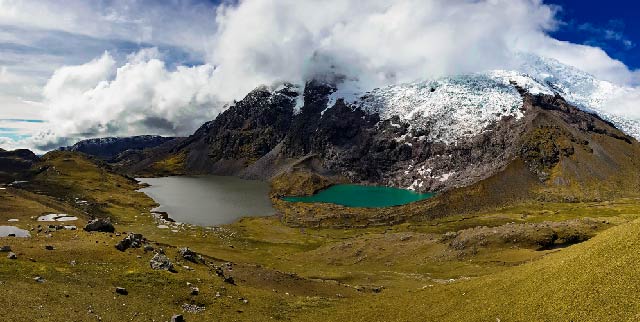

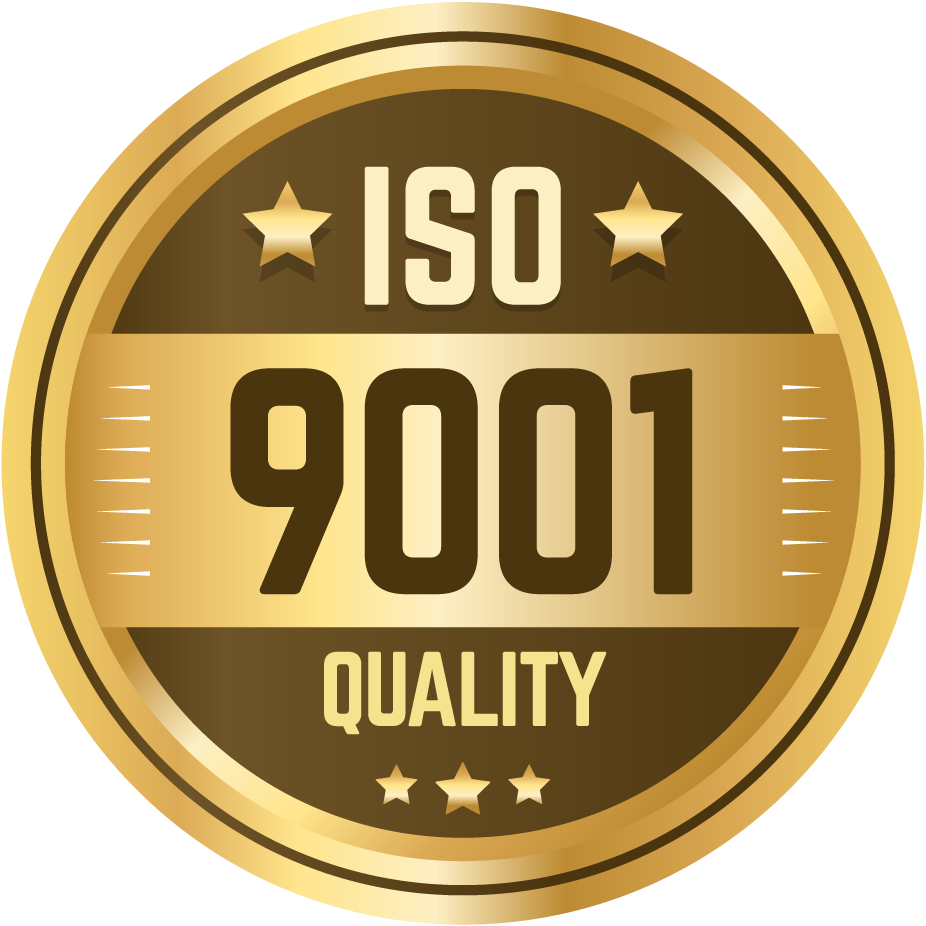

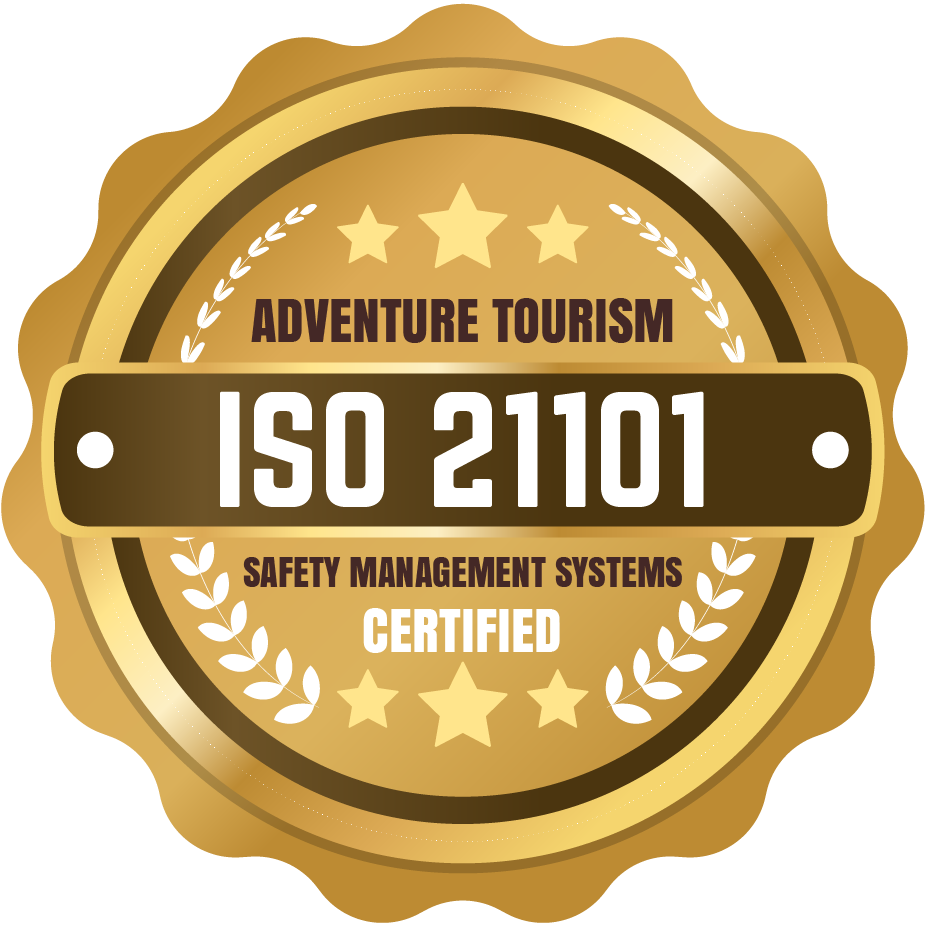
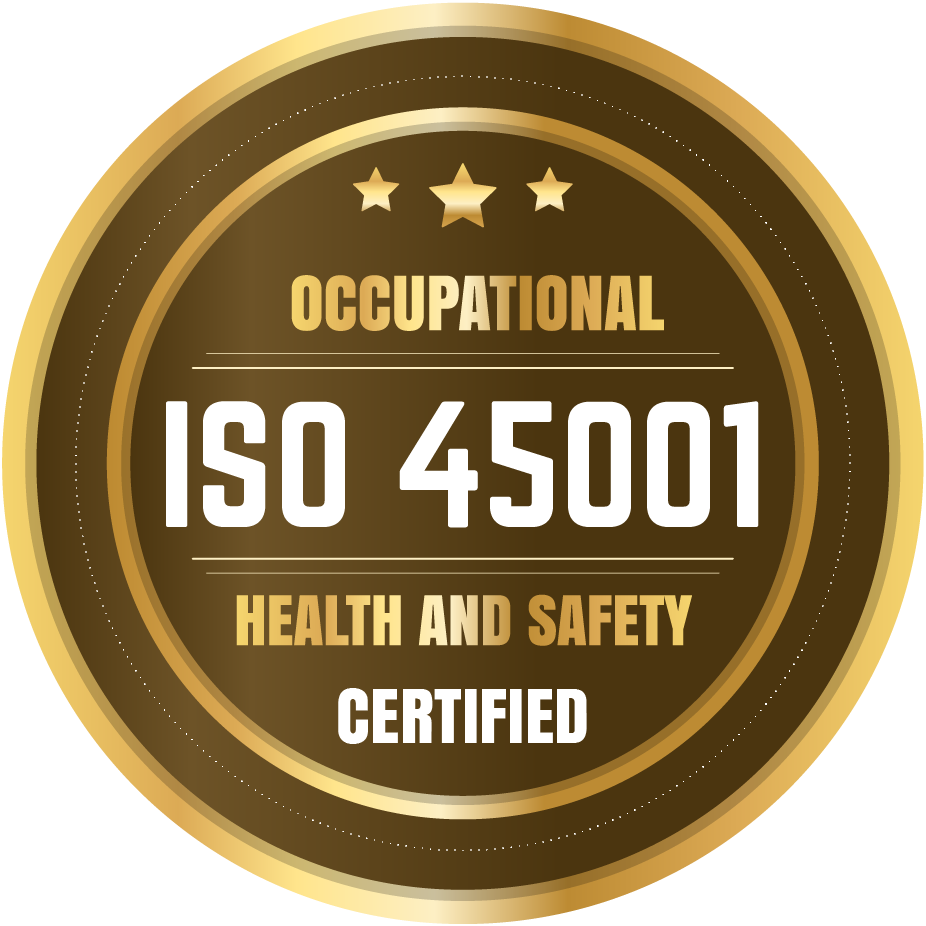
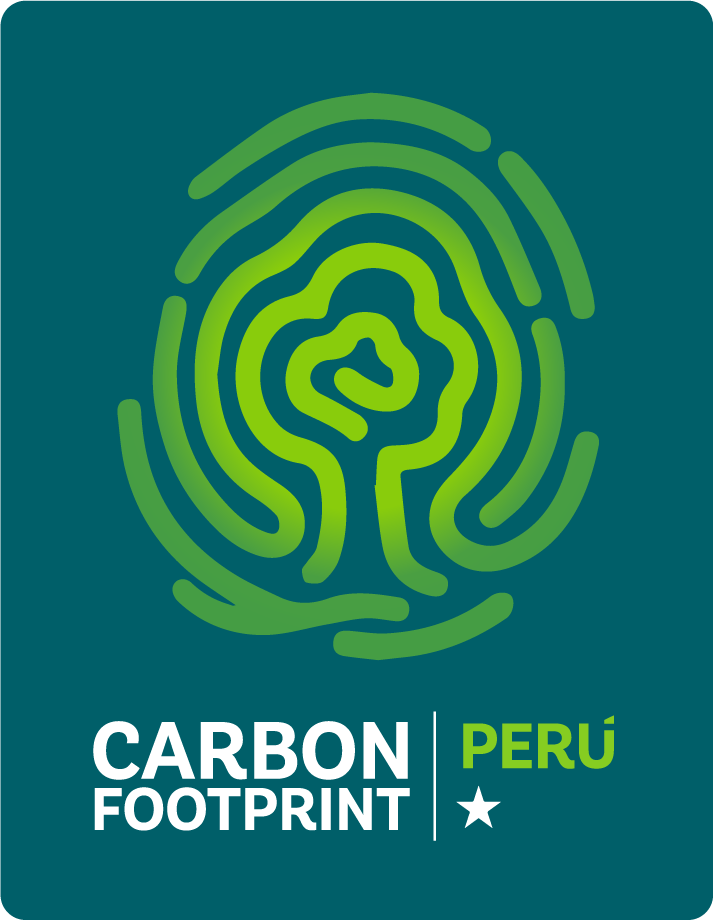
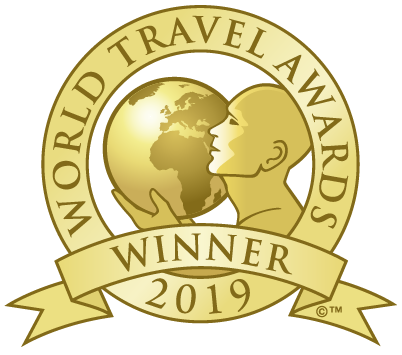










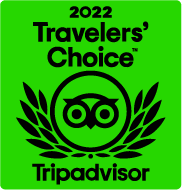
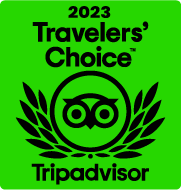
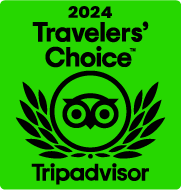














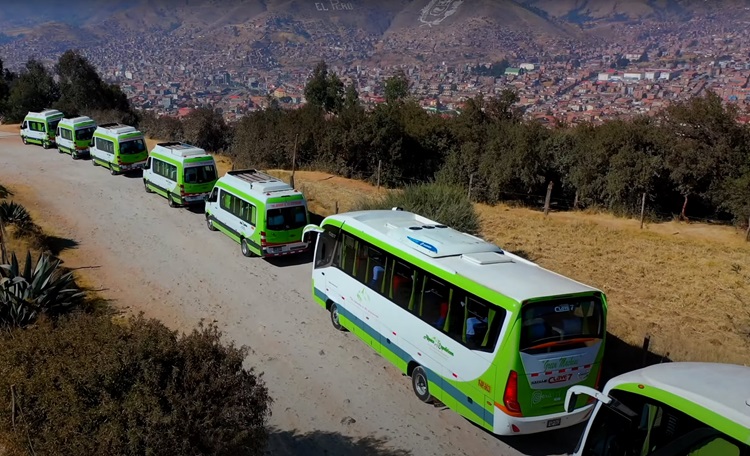
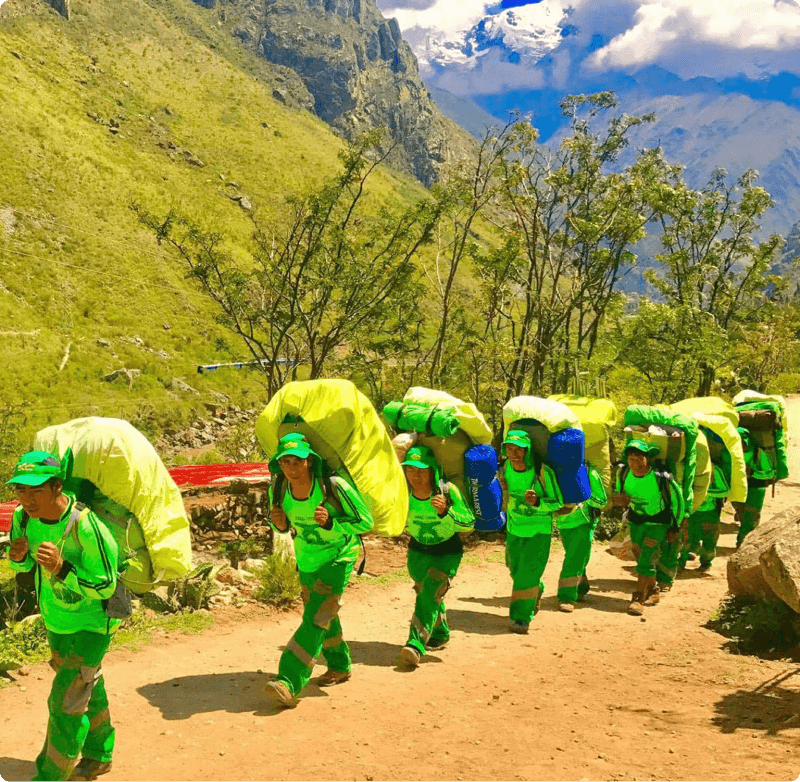 Porters will carry up to 7 kg of your personal items, which must include your sleeping bag and air mat (if you bring or rent one). From us, these two items weigh a combined total of 3.5 kg.
Porters will carry up to 7 kg of your personal items, which must include your sleeping bag and air mat (if you bring or rent one). From us, these two items weigh a combined total of 3.5 kg.